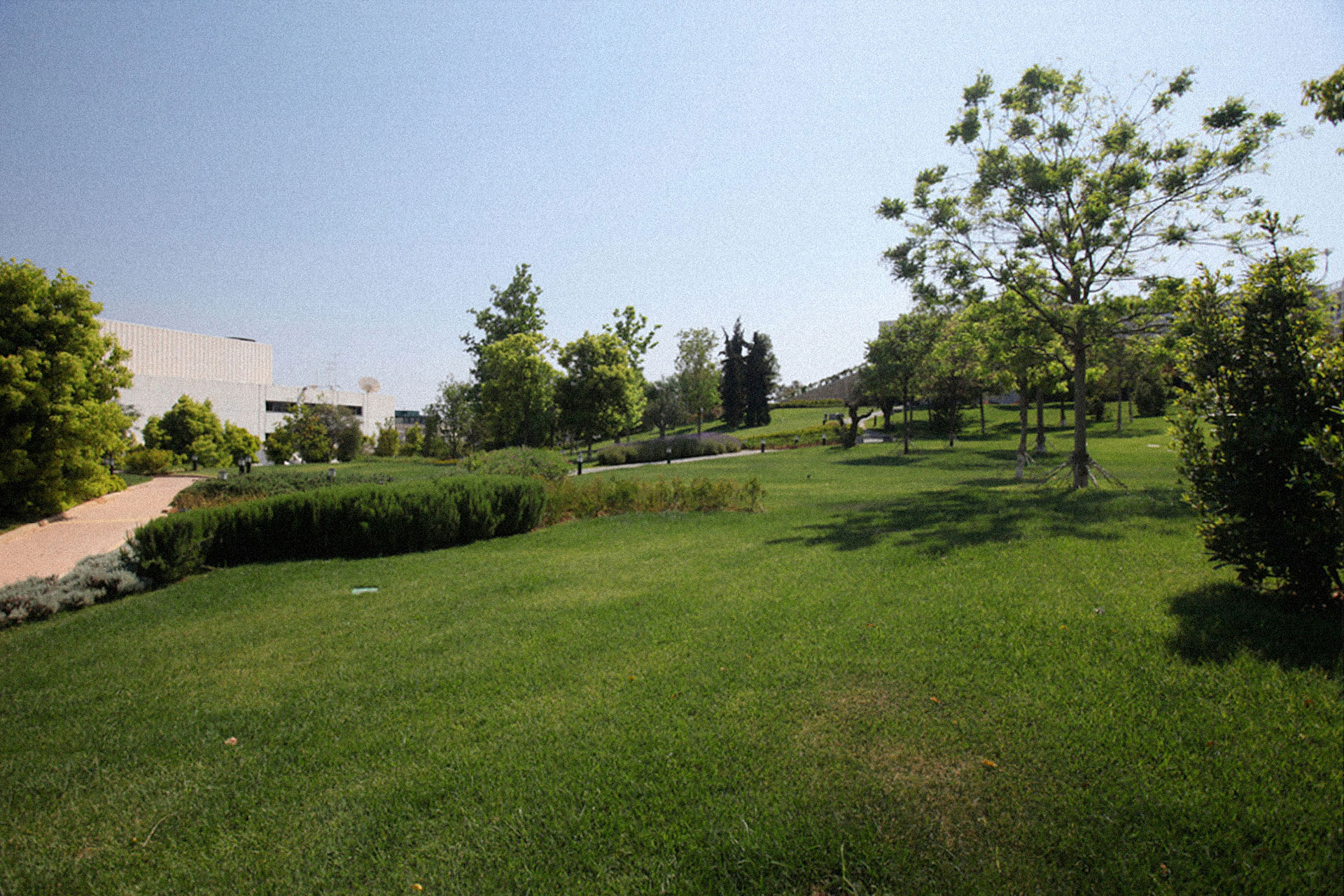The Megaron Garden

Culture at the megaron garden in the heart of Athens. The Megaron Garden is open to the public from 10am to sunset each day. With its greenery, flowers and trees the garden attracts people of all ages, who want to relax and escape the demanding pace of the city and have made the garden their second home – one offering a wealth of cultural and educational activities organized by the Athens Concert Hall.
The first musical events staged in the gardens were enthusiastically welcomed by the public. Perhaps the most unforgettable occasion was the concert by the Vienna Philharmonic, conducted by Riccardo Muti, in June 2010. No fewer than 4,000 people, seated on benches or lying on the lawns, among the orange and carob trees and the acacias, under the Attic sky, enjoyed the concert relayed live on giant screens.
The creation of the park, which occupies 4.5 acres, took into consideration the general and specific ecological conditions of the location, the aesthetic requirements of the individual site and the need to ensure that the various events and activities staged here could proceed smoothly and efficiently. In planning the disposition of the various green areas the planners took into account the aesthetic and functional demands of the site, as well as the surrounding ecological environment.
Walkers are free to stroll through a park that has the same structure as the area around the Venizelos statue, consisting of clusters of trees and bushes complemented by spacious lawns.
The vegetation consists predominantly of lofty trees, shrubs and climbing plants. Preference is given to indigenous species that would thrive in local conditions, but there would also be more exotic plants of special aesthetic appeal, able to adapt to the bio-climatic conditions of the site.
In choosing the species to be planted, special emphasis was laid on evergreens such as carobs, acacia, orange and magnolia trees, with care taken to ensure that at any time of year some of the trees would be in flower. The mimosa, yellow jasmine, viburnum and mahonia flower in the winter months. Early in spring, the ornamental plum-tree, Japanese quince and forsythia come into bloom. The planting of laurel along the fences bordering the gardens was decided on functional – preventing noise pollution – as well as aesthetic grounds.
The choice of ornamental plants was based on their individual characteristics, the ecology of the location, the functional purpose they are required to serve, the local micro-climate, the need to ensure aesthetic and biological balance among the various species, and the dimensions of the site.
A substantial contribution to the creation of this important open space in the heart of Athens was made by the Onassis Foundation, which made a major donation to the Friends of Music in June 1999.
This assistance allowed the landscaping of the grounds behind and around the Concert Hall, to create a unique green space in the city centre, designed to host a range of educational, cultural and environmental activities.
Designed to the highest specifications and worthy in every respect of the cultural centre they surround, the Concert Hall garden offers the public a pleasant place for encounters, reflection, leisure, cultural and educational activities.
THE DESIGN
The main intention of the gardens’ planners was to create a natural setting where a number of focal points would be arranged within open spaces – the latter as large as possible.
The contours of the site were designed to harmonize with the surrounding streets, the layout of the adjacent Eleftherias Park and the monument to Eleftherios Venizelos.
Another key parameter in the design was the need to allow for rainwater run-off. The public entrances to the building complex and the gates to the park determined the main axes of movement through the park and the disposition of the various green spaces.
INFORMATION
-
Access from Kokkali Street
-
Daily from 10 a.m. until sunset (unless events are hosted)

